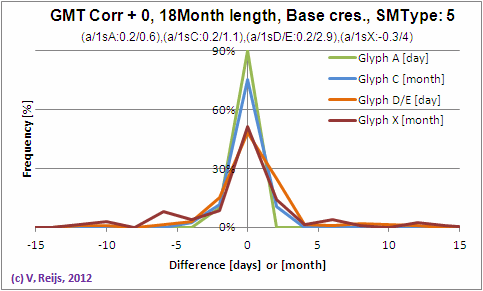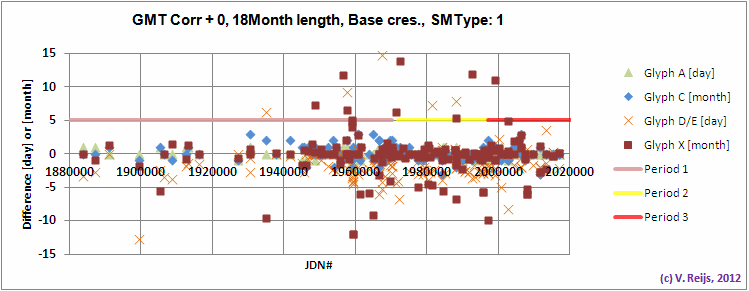Period 2 indeed seems to have somewhat less variations (as
expected for the Unity period), but it is not that significant.
In the below figure the 1 sigma of the differences has been
calculate over groups of 10 dates, and one can see there is no
significant reduction of this variation around Period 2:
In general the above behaviour of this Moon's Age at
Maya Creation Date (using Copan/Palenque's Moon's Age or Synodic
period) does not change when only looking at Period 2 glyphs:
for the Unity period a Moon's Age of 24 at Maya Creation Date
make the difference distribution still close to zero. This could
be expected as the Moon's Age of 24 is linked to Palenque, which
was the centre of Unity.
Conclusions
The following parameters are chosen to calculate the best
mapping on actual Glyph notations:
- The Maya Creation Date 0.0.0.0.0 as a reference
- The Copan Synodic period of 29.5302 days; which was also
used during the Unity period (Teeple [1931], page 68)
- The Palenque Moon's Age at Maya Creation Date of 24 days
Somewhat controversial related to the Copan Synodic period
length! If you have feedback, let me
know.
- The 18 month lunar synodic calendar of Linden
[1993]
- In general this is working for Teeple [1928]'s Periods 1,
2 and 3.
No decision could be taken around the Correlation. This will be
investigated as part of future evaluation of lunar/solar eclipse
notations.





